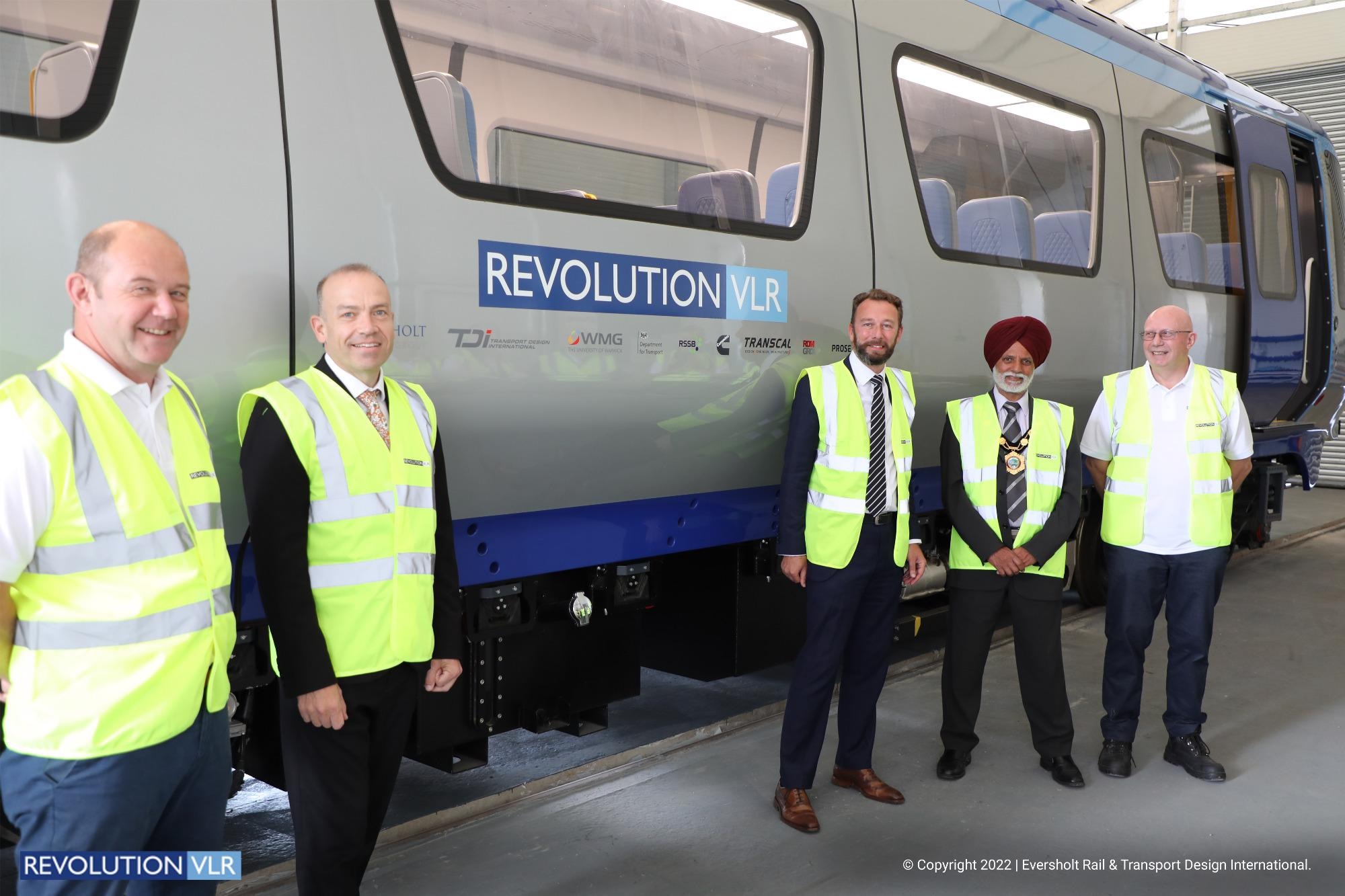TRB Lightweight Structures is delighted to be part of the team behind Revolution VLR (Very Light Rail), an innovative passenger vehicle designed to simplify extension of existing rail networks and allow the reopening of historical lines. TRB worked closely with consortium leader Transport Design International (TDI) on the vehicle’s composite bodyshell design, creating modular, one-piece structural panels that form both the inner and outer walls.

Image Credit: Eversholt Rail F. Transport Design International.
The design objectives for the Revolution VLR were to engineer a substantially lighter vehicle offering reduced energy consumption, while adhering to rigorous rail industry safety standards and governmental decarbonisation goals. To achieve these aims, TRB developed modular panels composed of moulded carbon fibre laminates with a recycled foam core. The project also took advantage of a unique polyfurfuryl alcohol (PFA) bioresin – a sustainable alternative to phenolic resins derived from a byproduct of sugar cane refining. Combined with a host of other innovative technologies, this modular construction resulted in the Revolution VLR Demonstrator being 40 per cent lighter than traditional heavy rail vehicles of similar capacity. This means that the single-carriage vehicle can run on reinstated existing lines, or new routes using lighter weight track infrastructure.
Lyndon Newman, Lead Engineer at TRB Lightweight Structures, explained: “Our lightweight structural modular panels not only contributed substantially to a 16-tonne reduction in total weight, but were also obtained from a sustainable source. This will significantly contribute to government commitments to decarbonisation in transport.”
Paul Salkeld, Design Director at Transport Design International, added: “The team at TRB worked hard to create a lightweight, modular and standardised shape for the Revolution VLR’s body panels. This not only allows construction of a lighter vehicle, but also assists in the replacement of parts for general maintenance requirements, which is a key consideration for vehicle longevity, given a 30 to 40 year lifespan.”